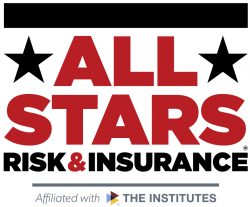Jana Utter’s Top-Notch Knowledge of ESG Risk Factors Enabled Her to Teach Colleagues Health Care’s True Environmental Impact

Jana Utter may work in health care now, but her background in energy risk management primed her to become somewhat of an ESG guru. That’s because energy companies must think about their impact, especially on the environment.
So, when Utter joined Centene in 2015 as vice president of enterprise risk management, she brought with her the knowledge to be mindful of growing interest in the environmental impact of companies outside the energy and manufacturing sectors.
“There are aspects of ESG, the environmental and social governance topics, that signal a company is really not just concerned about profitability but also being a good corporate steward,” Utter said. “ESG standards [at companies] are driving additional value beyond financial profitability and financial performance.”
Added values can include a good reputation — something vital to the longevity of a corporation, because consumers and other stakeholders want to be in business and partnerships with companies they see as good, fair and just.
Utter was brought to Centene to manage and monitor ERM, taking a deep dive into emerging risks. One, she said, included the topics of ESG: “I looked at what was going on externally in other sectors and then what was happening in our sector and how the two relate,” she said. Her understanding of the E pillar in ESG was a guiding force.
“We reported a rise of environmental topics around climate change and climate-related risk,” explained Utter. The real task, however, was describing how that E pillar could impact a business that primarily operates within a traditional office-based setting.
“The question was, ‘how do climate risks and greenhouse gas emissions apply to us?’ ” she said. But Utter found two ways to make the lesson stick: First, as a health care enterprise, connecting climate risk to people’s health was easy to demonstrate, such as with wildfires causing poor air quality and triggering respiratory issues.
The other piece of the teaching puzzle came with Utter’s background as an energy sector risk manager. She knew the importance of addressing environmental impacts, and she could speak with familiarity about it in such a way that others understood instead of using jargon-heavy presentations to explain greenhouse gas emissions.
Because of Utter and her team’s efforts, Centene had its ESG messaging in place by early 2020.
In addition, Centene’s ESHG Strategic Framework carves out health or ‘H’ as a separate pillar. When meetings were held with executive management to develop the company’s ESG strategy, health-related topics were regularly discussed as essential to Centene’s strategy, purpose and mission and also of importance to the company’s stakeholders. Consequently, it seemed like a natural fit to add a focus on health initiatives.
“It’s a benefit in that we have already started this. We have to present our message on what we’re doing, and we can under our ESHG Strategic Framework, which naturally aligned with many of our existing initiatives,” Utter said. While some companies are just getting started, Utter has set Centene up for success in ESHG efforts.
And as the point person in charge of reviewing ERM strategies, Utter added that jumping on and advocating for ESG was a no brainer.
“Companies that deliver long-term financial results are also shown to be good corporate citizens,” Utter said. “It’s ERM in an ESG world. It’s looking at enterprise risk management and seeing how ESG performance metrics can impact the company.” &
 Every year, Risk & Insurance selects deserving candidates to become Risk All Stars. These are risk managers who, through their perseverance, passion and creativity, make a big difference to the stability of their organizations.
Every year, Risk & Insurance selects deserving candidates to become Risk All Stars. These are risk managers who, through their perseverance, passion and creativity, make a big difference to the stability of their organizations.
See all the 2022 Risk All Star Winners here.










